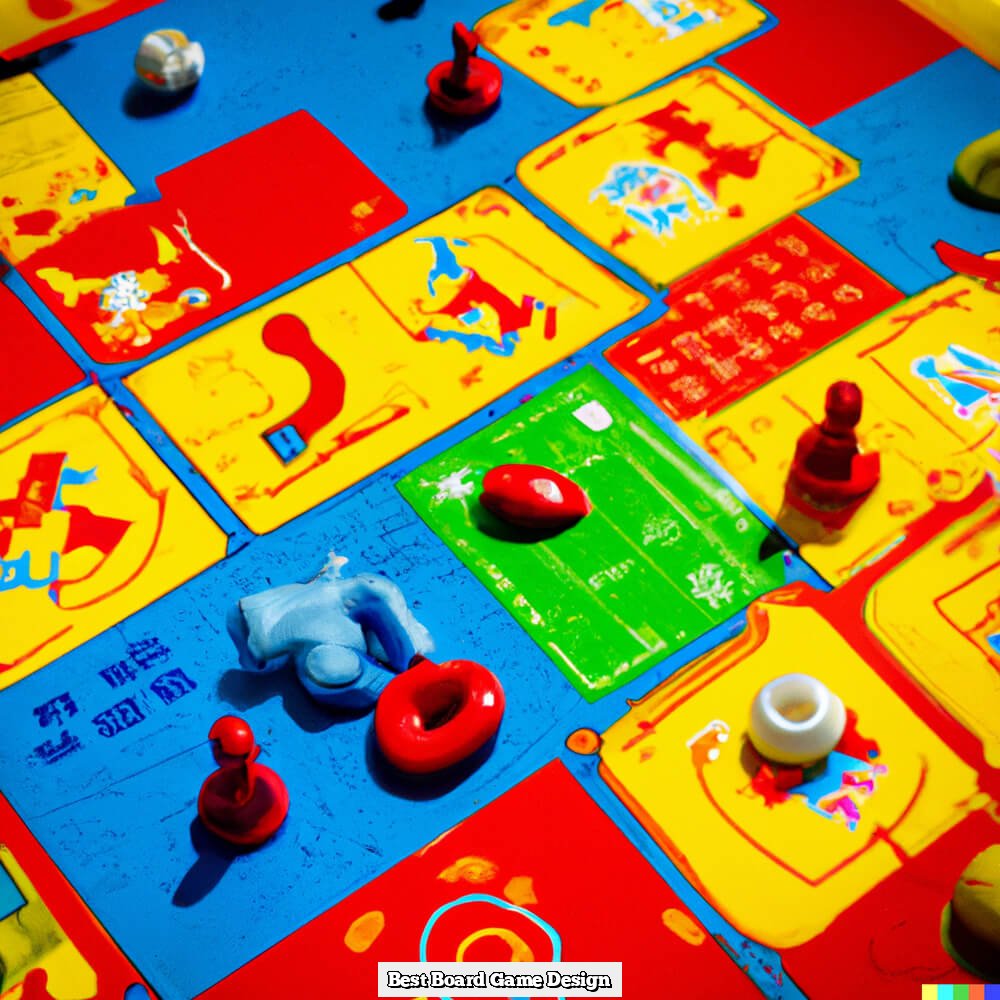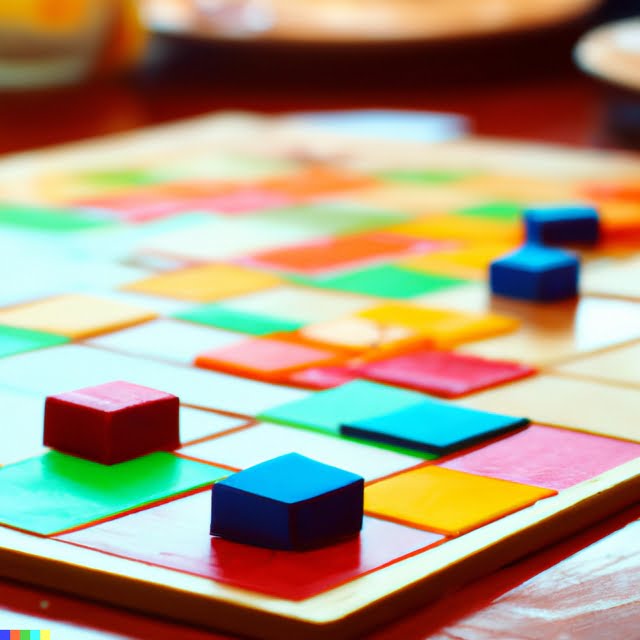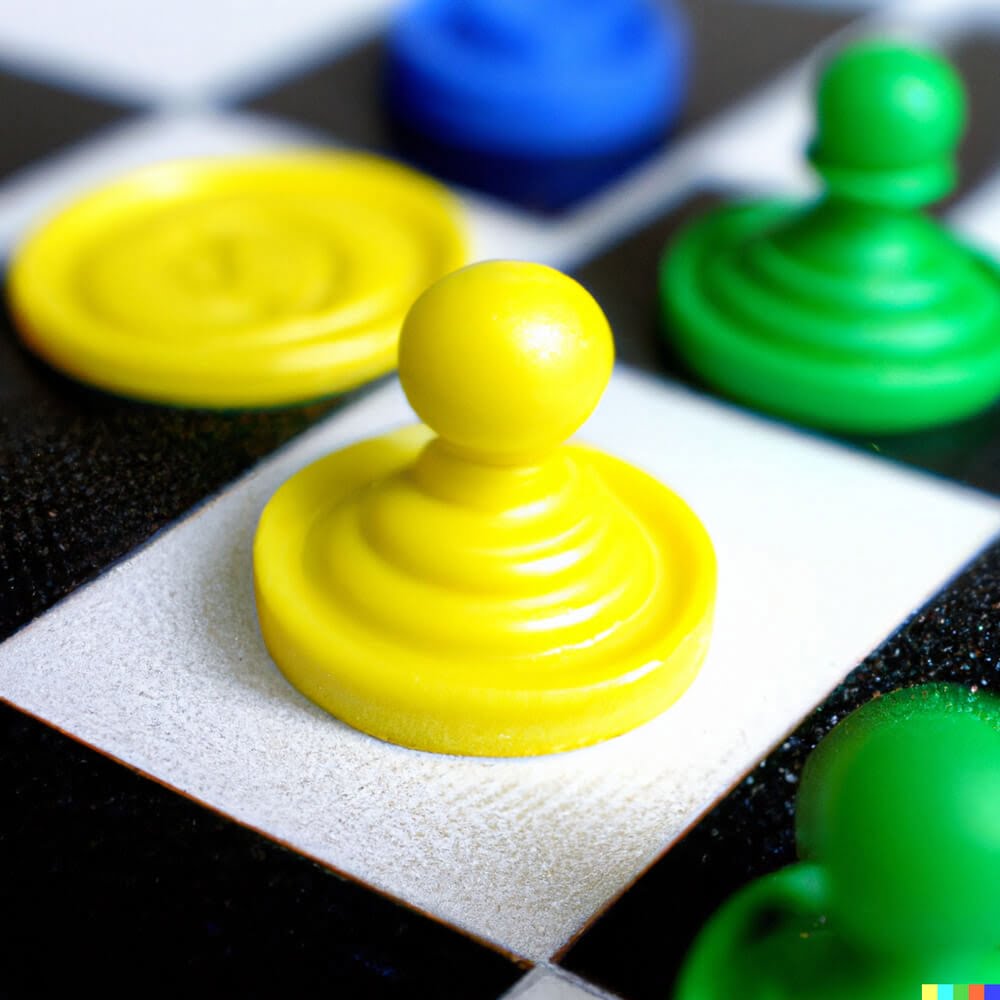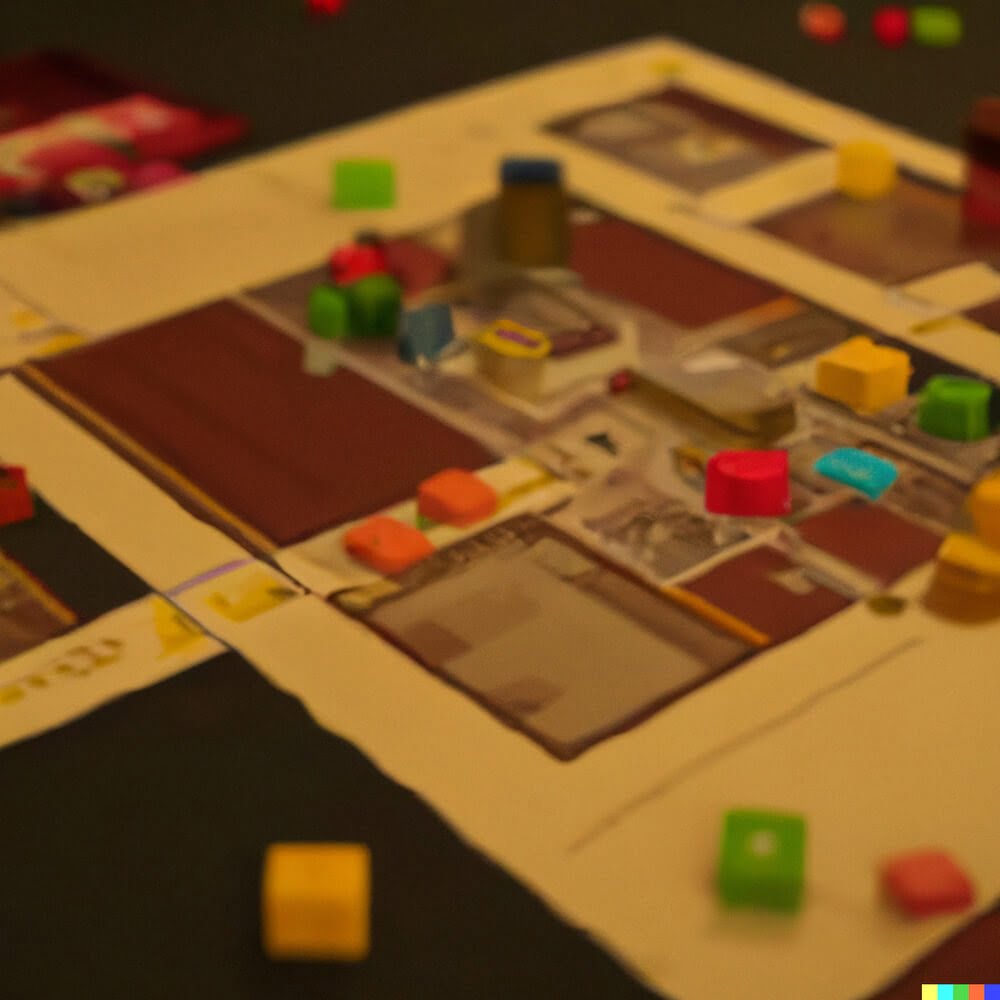Board game design for beginners provides an exciting and rewarding way to nurture their creative skillset. Whether it be customizing a pre-existing board game, or creating an entirely original one, designing board games is something anyone can do – no matter the skill level.
Crafting your own game allows you to explore endless realms of creativity while leveraging your knowledge of popular mechanics from existing titles. There’s also the potential to bring people together with the sheer joy of playing a well designed game you created.
Learning How to Design Board Games: Examples and Tips When starting out, it can be best to use an existing type of game as inspiration when learning the basics of board game design. This can also make figuring out what resources are necessary easier, as there are already published versions that offer insight into graphics/materials needed if you decide to produce a physical version.
Taking abstraction from the concept of strategic card games such as Magic The Gathering may be especially beneficial for assimilating important rules like win conditions and resource management. You could also start by customizing a classic children’s title that everyone knows and loves, in order to practice the basics before exploring more innovative features.
Testing & Experimentation: Iterative Game Design It’s essential to create an iterative process when designing board games so playtest results can have a real impact. Having multiple groups test out different versions of your prototype alongside each other using smart metrics can draw attention to which version seems most enjoyable overall or indicate areas for improvement.
Without long drawn-out playtest rounds, you’ll never really know which tweaks work best for what you’ve created until experienced players engage in some simulated battles on the table top playing field. Ultimately, implementing continually feedback keeps player engagement up over time so reinforcing great ideas frequently can foster even greater imaginative possibilities with each new iteration released.
Benefits & Challenges of Board Game Design for Beginners
Designing a board game is an exciting and enriching experience, especially for beginners. Board game design combines elements of creativity, strategy, and chance, all of which provide numerous benefits and challenges when it comes to creating a successful product.
Benefits
Making your own board game can be incredibly rewarding. Not only do you get to immerse yourself in the creative process, but also see something tangible at the end – a real game coming together from your ideas.
Of course there are other benefits too; board game design provides an opportunity to have fun with your friends or family, strengthen problem solving skills as well as teach storytelling skills or foster cooperative play among groups. Experienced designers may use this as a learning opportunity to gain experience in prototyping rules-based games – good practice for upcoming projects too.
Challenges
With new challenges come possible pitfalls such as overcomplicating rules or incorrect representation of values and rewards through material resources. The most important part of any designing project is managing complexity in a meaningful way so that all players understand the concepts easily yet still enjoy the experience of playing the new game.
Beginners may encounter difficulty in striking this balance and should not focus on making intricate systems at first but rather strive towards simple yet engaging designs with added layers over time. Learning basic principles about gameplay mechanics is also beneficial when it comes to introducing new elements into an already existing set without increasing complexity unnecessarily.
Additionally designing a prototype, finding playtesters, conducting market research can be daunting tasks especially when starting out as these steps require effort if undertaken properly. Understanding how different components work together is an important part of this process; getting feedback from experienced boardgame enthusiasts might help novice designers navigate these steps more confidently even though it takes some dedication and hard work.
Essential Elements of High-Quality Game Design
High-quality board game design requires a great deal of skill and creativity. As a beginner in the field, it may be overwhelming to consider all of the different elements that can contribute to high-quality game design. The following list outlines some essential elements of successful board game design that should be taken into account when designing your first game:
- Theme – Creating an engaging theme is key to creating an enjoyable experience for players. It provides the ability to draw players in and makes them feel like they’re part of something special.
- Gameplay – The pace and complexity of gameplay are important elements that determine how much fun people have while playing. A good game will have a steady balance between challenge and fun.
- Graphics – A well-designed and attractive set of graphics will go a long way towards making your board game more visually appealing.
- Components – Playing pieces, boards, cards, dice, etc., are all necessary components for most board games. It’s important to choose components that are durable yet don’t ruin the overall theme or aesthetic of the game.
- Rules – Creating clear and concise rules is essential for players to understand how to play your game and follow along easily during gameplay. A good rulebook should clearly explain all necessary information without relying on too much jargon.
While these five elements are crucial for any high-quality board game design, there are also certain considerations unique to each individual project that must be taken into account. For example, designers must ensure their work is not infringing upon any copyrights or patents held by others.
There also has to be sufficient market demand for any given product; conducting research ahead of time can help eliminate wasted effort developing a product nobody wants. Designers also need extensive knowledge in order to create components correctly on an affordable budget so that their products remain competitively priced within the marketplace.
Narrowing Down the Right Types of Games for Your Design
Making sure you have the right board game for your design can be hard to navigate. You need to consider the functions of the game, cost-effectiveness and compatibility with your target audience in order to craft the perfect one. Here are some points to help guide your thought process:
- What type of game will be enjoyable? Games that involve strategy, storytelling or building something can relevant for a range of ages.
- What is an appropriate amount of complexity? Depending on who the players are, you should determine how complicated or simple your game should be.
- How affordable should it be? Decide how much money it should cost to make and purchase each copy and determine what materials could work best.
Now that these key elements have been addressed, you’ll want to focus on the visual appearance, design functionality, and rules of play. The visual element will determine whether users are intrigued in the first place – friendly illustrations will make them more likely to engage with it.
Then, you must incorporate functional communication between each player so they know what their role is within each turn. Finally, include clearly outlined rules so they understand what is expected for participating in the game and feel incentivized to continue playing through understanding their chances of winning.
You may also want to decide if there are stakes within the board gaming experience or if it will only serve as a fun activity for everyone involved. Stakes can come either in physical form such as tokens or points earned from achieving certain objectives throughout playtime or even virtual stakes – like getting rewards from free downloadables related to popular characters or properties.
Either option may also depend on what age range you’re designing for; if kids are playing it then you’ll likely not resorting tangible stakes while adults might appreciate something earned at the end of playtime. Additionally, adult parties may opt for harder puzzles that reward skillful strategising with respect among peers as opposed witnessing a race towards a victor’s goal line.
Crafting Your Ideas Through the Design Process
It is getting easier and easier for Board Game Design beginners to enter into the world of game designing through websites, software, and other resources. Getting started with your design process can be daunting at times but it’s a lot easier when you have tools to help you craft your ideas.
The first step in the board game design process is concepting. This involves brainstorming different kinds of games, what type of mechanics they will use, how they will play out, and even what the thematic components may be. Having a clear understanding of the concept of your game is essential for implementing the right mechanics and creating an attractive game.
Once your overall idea is established, it’s time to develop game rules. Depending on the type of game you have created, this could range from simple move-and-take mechanics all the way up to complex systems that involve dice rolls or card draws. It’s important to note that establishing a few basic rules at first before adding more complexity will help test ideas more easily while playing early prototypes with friends and family.
The final step in transforming hopefully great concepts into reality is prototyping. During prototyping it is beneficial to keep updating existing rules and components with pieces such as blank cards or plastic tokens so that you can focus on refining the gameplay without distractions from aesthetics features such as artwork or custom boxes which come later in production phase afterwards.
Making sure your prototype looks somewhat aesthetically pleasing goes a long way towards helping players get into the right frame of mind when testing and playing through iterations of a game. With enough play testing behind you, taking feedback from others who playtest during these stages are key for any designer looking to take their designs further until a final version is ready for mass production.
Websites like BoardGameGeek provide free resources on different types of components, tools for developing files used in manufacturing processes and even helpful advice found within their forum threads by fellow designers eager to share experiences about design processes; – providing invaluable insight across many genres whether one intends on self-publishing or approaching larger companies already established in industry.
And lastly don’t underestimate importance of attending conventions or seeking advice/guidance from professionals experienced in related aspects toward owning successful gaming products once goals become obtainable via licenses after pitching designs over email or going directly through scouting events hosted at conventions worldwide.
Tips and Tricks for Developing Compelling Game Mechanics
When it comes to board game design, the mechanics are key. Creating a unique yet fun playing experience that keeps players engaged can be challenging for both experienced and beginner game developers alike. However, with some basic tenets of game design in mind, creating a memorable experience for your players can be achieved.
Flow
Ensuring a flow to the play is important in keeping players engaged. Players should be able to understand each move by building on previous moves and easily adjust to new rules and changes as they go along. Games tend to flow best when they have both short-term and long-term objectives that give players something to work toward but also offer them small rewards in the process of achieving the larger goal.
Balance
An important factor of successful board games is making sure there is an element of balance between players in terms of resources such as money or items necessary for gameplay. This helps ensure that no player is too advantaged or disadvantaged at any point during the game, which makes for a fair playing experience for everyone involved.
In addition, balance often adds tension between players as each attempts to achieve their goals while simultaneously thwarting their opponents’ progress – another factor that can spruce up the feeling of anticipation among participants as they progress through gameplay.
Themes
Finally, having a theme or premise behind your boardgame can be key in providing an immersive experience for participants; themes add another layer of interest and engagement that further encourages interaction between players while adds interest and flavor.
Whether your chosen theme be familiar or abstract, make sure you provide enough details within it with diverse characters, interesting locales, evolving story lines or other creative flourishes that will add depth and complexity to your game mechanics while helping keep gameplay interesting from start to finish.
Playtesting and Gathering Player Feedback
Playtesting is an essential part of the game design process. It gives designers valuable insight into what players think of their game, and how it can be improved. Here are some tips for gathering feedback from playtesters:
- Observe & Listen: When playtesting, observe how players play your game – what strategies do they use? Do they seem to like or dislike certain elements or mechanics? Listening to players can help give you insight into how your game works and how it can be improved.
- Encourage Feedback: Encourage constructive feedback from players about the experience your board game provides. Having feedback on specific areas like turn structure, production value, and writing will create a more thoughtful dialogue with your testers.
- Listen to Criticism: It’s not enough just to gather feedback – you should also be willing to listen and take it seriously. If criticism comes up frequently in playtests, it’s an indication that something needs changing in the design. Don’t get defensive; truly consider why people don’t like certain aspects of your game.
In order to really get the most out of a playtesting session, you’ll need to figure out the best way to conduct the test. Here are some tips for organizing a successful playtest:
- Choose Your Audience: Decide who would be best suited for testing your board game. Are they experienced gamers or beginner level? Will they enjoy highly strategic games or prefer something simpler? Knowing this ahead of time will make the process smoother.
- Be Prepared: Make sure everyone involved has all the necessary items before starting such as any physical components (cards, pieces, boards) and rules if applicable. Have enough copies of each component so each player has everything needed for a full playtest session.
- Set A Timeline: Setting clear boundaries on when the playtest should start and finish helps keep everything organized. This way everyone knows exactly when he or she is expected to arrive with any materials needed as well as what time they are expected to leave.
Bringing Your Design to Market
Creating and designing a board game is an incredibly rewarding experience. Not only does it provide an opportunity to develop helpful problem solving skills, but also offers a great outlet for creativity. Creating the game isn’t even half of the effort required to bring it to market; for that you need advanced knowledge of publishing, licensing, and distribution strategies. This can be especially daunting for beginners in the game board design industry.
One of the primary strategies any hobbyist board designer should consider is self-publishing their own product. With self-publishing you are essentially turning your own garage into a workshop or small manufacturing business of sorts.
Even though you’ll have to shoulder all the responsibilities such as financing, manufacturing, distribution and marketing, it comes with advantages such as high flexibility and future scalability since you fully control all aspects of production and will be receiving direct compensation for each item sold. Additionally, self-publishing can give individuals access to some unique promotional opportunities such as conventions and other special events which can serve as powerful marketing tools in getting your product out there.
Licensing can be another great way for new designers to launch their products in the market, but it requires more research up front and potentially some legal advice if needed. As part of a licensing agreement, you generally assign or transfer intellectual property rights over to a company who is willing to act as a publisher on behalf of your game.
Licensing helps reduce risk while providing access to expertise in production costs along with numerous resources from existing distribution networks that might take years for an independent individual or small business team acquire otherwise. However, keep in mind that by going with this strategy you won’t be able to take complete creative control over your product anymore due its new ownership status under the licensor’s responsibility so pick wisely who you entrust your IPs too.
Finally, understanding distribution networks is also key when attempting create market demand around any product design initiative no matter how large or small scale they initially might be planned out on paper or conceptualized digitally. This comes down partially understanding geographic target markets since not all countries have exactly same level economic efficiency thus making them more difficult access at times than others through direct sales channels alone (online stores etc).
Most major gaming companies today utilize global supply chains consisting both direct retail outlets given its nature physical products being shipped directly consumer plus quite bulk warehouses located strategic positions around world enabling reach wider audience diverse platforms various online/digital retailers like Google Play Store iTunes etc so look these possibilities help yours get traction competitively too.

I love playing all kinds of games – from classics like Monopoly to modern favourites like Ticket to Ride.
I created this blog as a way to share my love of board games with others, and provide information on the latest releases and news in the industry.





